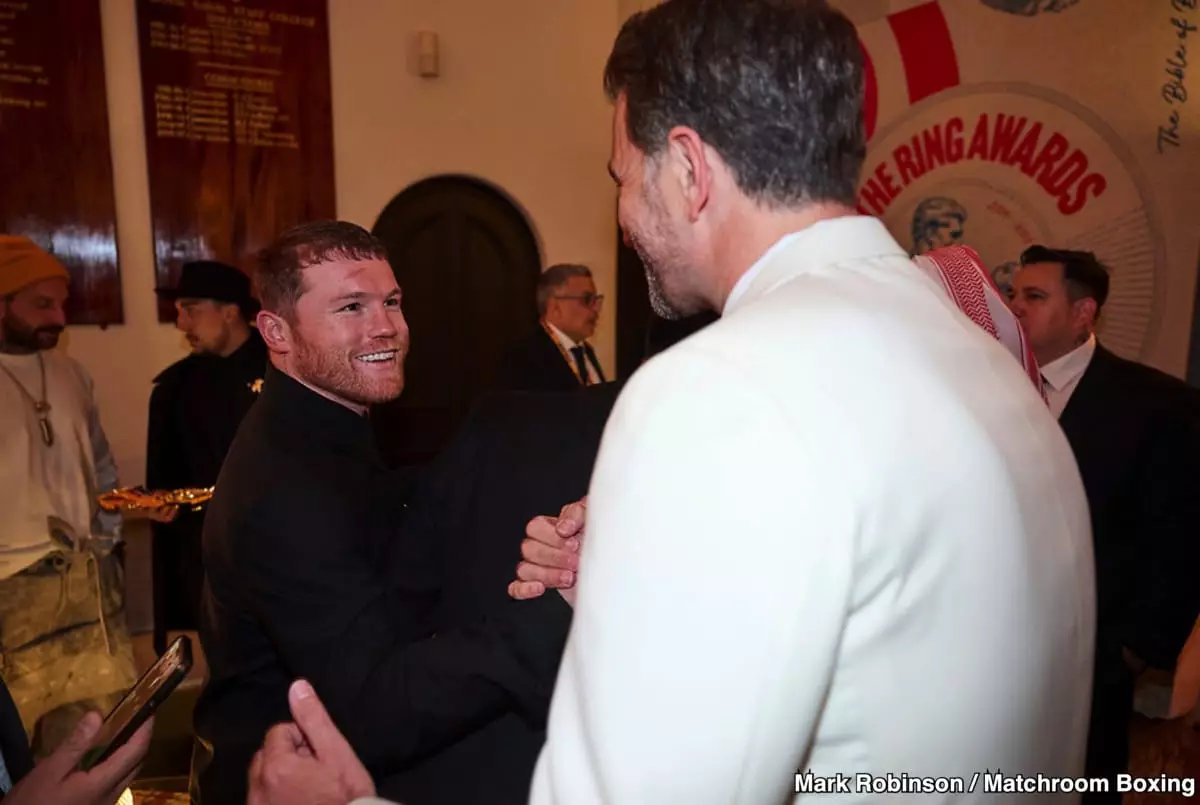Terence Crawford, the undefeated multi-division champion, is gearing up for a potential showdown with Canelo Alvarez, one of the most formidable forces in boxing history. Many analysts look back to the strategic fight plan employed by Floyd Mayweather when he faced Alvarez in 2013, suggesting that Crawford could adopt a similar approach to achieve victory. However, this comparison begs a critical examination. Nearly a decade has passed since Mayweather’s triumph, and the landscape of boxing has changed dramatically since then.
In 2013, Alvarez was still in the early phases of his career, featuring a lighter and less developed physique compared to the powerhouse that stands before us today. Canelo’s transformation into a larger, more powerful super middleweight presents a stark contrast with Crawford, who is contemplating moving up in weight classes at the age of 38. The sheer difference in size and strength poses a significant challenge for Crawford, as the attribute that once contributed to Mayweather’s success—quick movement and elusiveness—may not yield the same results against the evolved version of Alvarez.
Crawford has publicly expressed a singular desire to face Canelo. His avoidance of other contenders in the junior middleweight division raises questions about his confidence and strategic choices. While some might argue that chasing the biggest names enhances his legacy, others see this fixation as a potential sign of fear. A trial run at super middleweight against a less decorated opponent could serve to test his capabilities at that weight and safeguard against the possibility of a disappointing debut against a fighter of Canelo’s caliber.
The fears surrounding an initial fight at 168 pounds are legitimate; if Crawford were to suffer a humiliating defeat in such a match, the momentum toward a bout with Alvarez could dissipate, leaving his aspirations of capturing glory at stake. Furthermore, he faces the dilemma posed by Turki Al-Sheikh’s potential intervention—would the investor still support Crawford’s pursuit if he tarnished his record in a warm-up fight? These concerns illustrate the psychological pressures Crawford faces as he prepares for the monumental challenge ahead.
It’s essential to scrutinize Crawford’s recent performances, particularly his outing against Israil Madrimov, which serves as a cautionary tale. In his debut at the junior middleweight level, Crawford showcased signs of age, inactivity, and the inevitable complications that accompany a significant weight transition. It highlights the risks associated with moving up in weight classes; the adaptations required aren’t as simplistic as a training camp could suggest.
His recent fight illustrated that age may not be kind to the once-dynamic boxer known for his agility and strategic acumen. Transitioning to a new weight class compounds these challenges, as the power dynamics shift significantly. Canelo’s experienced punching power and refined technique create a daunting confrontational environment for any opponent, particularly an aging fighter adapting to heavier weights.
Crawford’s fixation directly on Canelo Alvarez is increasingly curious. With several worthy contenders available at 154 pounds, the decision to sidestep significant fights suggests that Crawford is banking on a legacy fight that could define his career. Commentators, like Ade Oladipo, have noted that Crawford seems unwilling to compromise by facing other top-tier fighters such as Sebastian Fundora or Vergil Ortiz.
This refusal to engage with the other rising names creates an illusion that Crawford is set on seizing his championship destiny through narrow paths of opportunity. However, pursuing Canelo exclusively might simultaneously undermine his career by limiting his potential for continued growth and experience at the junior middleweight or super middleweight levels.
As Crawford eyes the ring across from Canelo Alvarez, the air thickens with tension. He stands at a crucial junction: vie for immediate glory, potentially sacrificing his record and future opportunities, or seek substantial preparation by testing himself against tier-two fighters in new weight classes. The boxing world watches closely, reflecting on the lessons from the past and the distinct challenges of the present. Crawford’s journey is a testament to the intersection of ambition, age, and the enduring legacy that every great fighter hopes to carve into the annals of boxing history. Ultimately, Crawford must face the reality of his ambition—success against Alvarez requires more than just a blueprint; it demands preparation, strategy, and perhaps a dash of bravery.


Leave a Reply